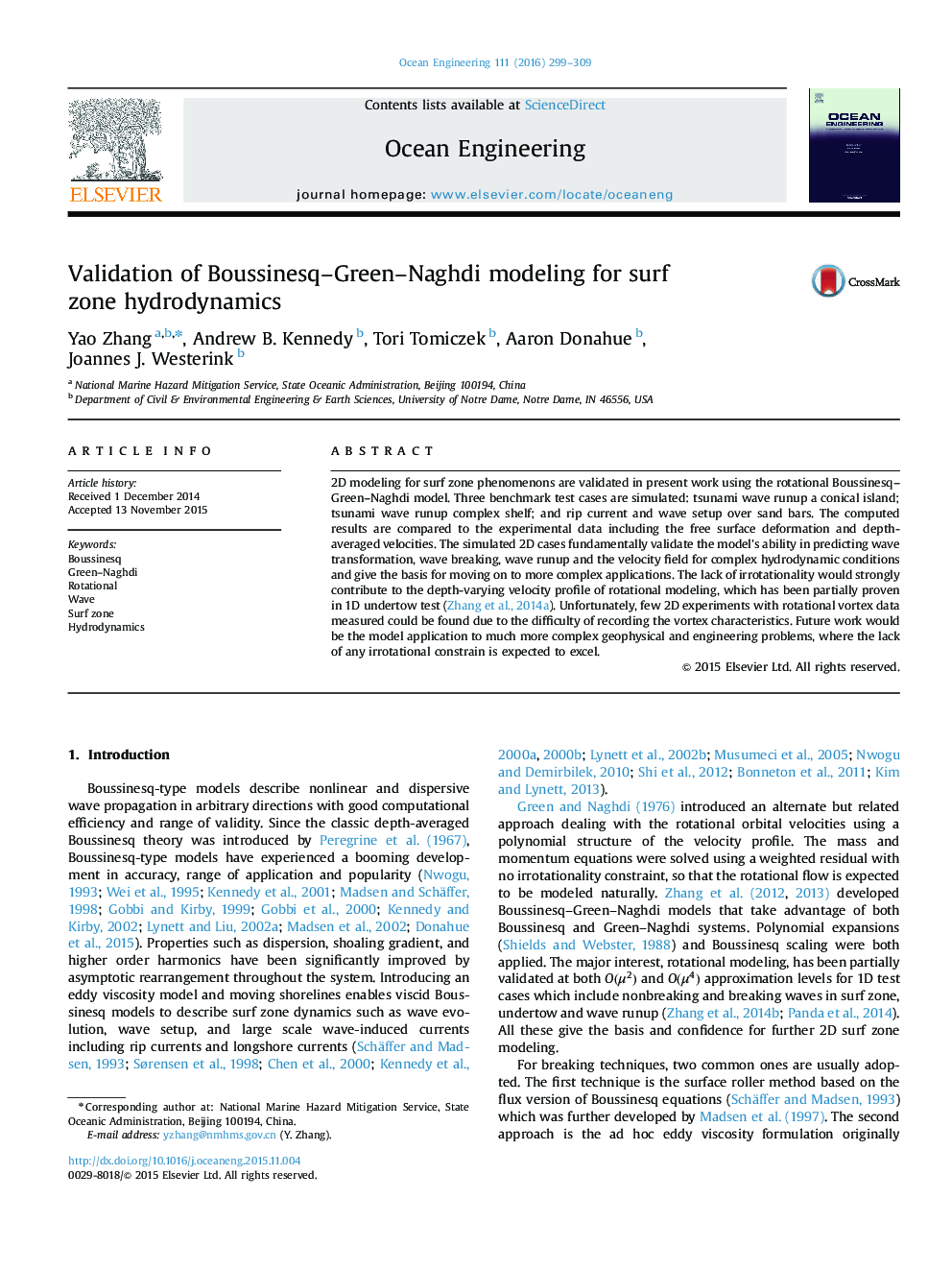| Article ID | Journal | Published Year | Pages | File Type |
|---|---|---|---|---|
| 8065118 | Ocean Engineering | 2016 | 11 Pages |
Abstract
2D modeling for surf zone phenomenons are validated in present work using the rotational Boussinesq-Green-Naghdi model. Three benchmark test cases are simulated: tsunami wave runup a conical island; tsunami wave runup complex shelf; and rip current and wave setup over sand bars. The computed results are compared to the experimental data including the free surface deformation and depth-averaged velocities. The simulated 2D cases fundamentally validate the model׳s ability in predicting wave transformation, wave breaking, wave runup and the velocity field for complex hydrodynamic conditions and give the basis for moving on to more complex applications. The lack of irrotationality would strongly contribute to the depth-varying velocity profile of rotational modeling, which has been partially proven in 1D undertow test (Zhang et al., 2014a). Unfortunately, few 2D experiments with rotational vortex data measured could be found due to the difficulty of recording the vortex characteristics. Future work would be the model application to much more complex geophysical and engineering problems, where the lack of any irrotational constrain is expected to excel.
Related Topics
Physical Sciences and Engineering
Engineering
Ocean Engineering
Authors
Yao Zhang, Andrew B. Kennedy, Tori Tomiczek, Aaron Donahue, Joannes J. Westerink,
